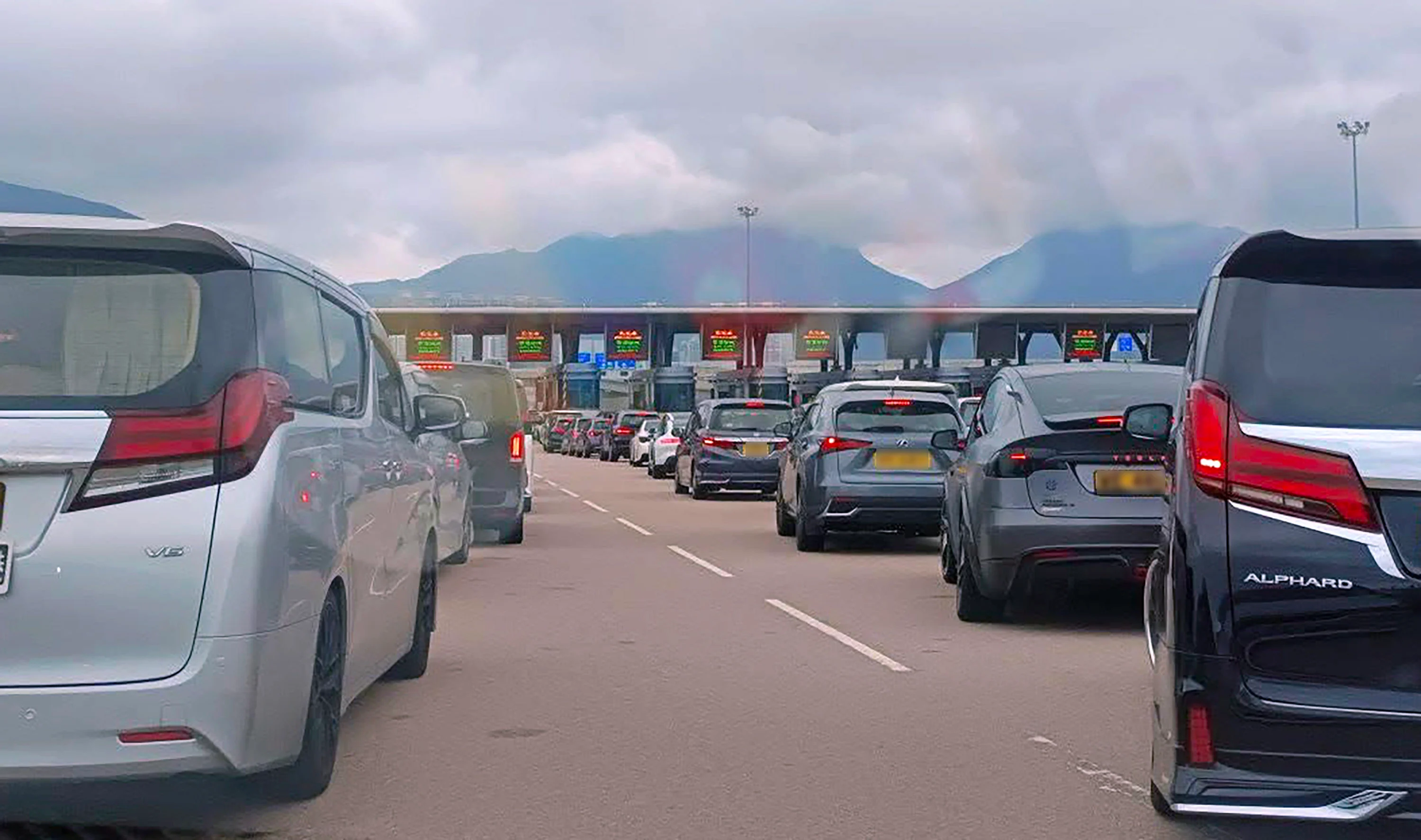By Cannix Yau
Hong Kong should consider relaxing a proposed 100-vehicle quota for a scheme that will allow Guangdong motorists to drive to the city, former leader Leung Chun-ying has said, suggesting the limit could be adjusted for weekdays and holidays.
Leung, who now serves as a vice-chairman of the nation’s top political advisory body, the Chinese People’s Political Consultative Conference, raised the suggestion on Saturday.
Earlier this week, transport officials said drivers could start applying for the Southbound Travel for Guangdong Vehicles scheme from November, with 100 motorists set to be allowed to cross into the city via the Hong Kong-Zhuhai-Macau Bridge each day.
Leung, a state leader, said the policy was a small step towards a larger breakthrough, adding the government could relax the quota if no accidents or traffic problems arose in the initial weeks after the scheme’s launch.
The cap could also be applied flexibly on weekdays and various holidays, he said.
“For example, we have Christmas holidays, but mainland China doesn’t. The mainland has many “golden week” holidays that we don’t,” he told a television programme.
“Therefore, I don’t think it necessarily has to be a fixed number of cars every day for 365 days a year. Instead, we can be completely selective about how many cars we allow on which days.”
Yeung also advised Hong Kong and Guangdong authorities to discuss simplifying mainland checkpoint procedures for the Northbound Travel for Hong Kong Vehicles scheme, so drivers could avoid having to keep getting in and out of their cars.
The southbound scheme was the subject of discussion among lawmakers as well, with some raising concerns over the possibility of mainland motorists contributing to congestion or conflicts with Hongkongers about differing driving practices.
“I am worried the scheme will trigger Hong Kong-mainland conflicts like many years ago. My concern is that there are many rules for the city’s roads that mainland drivers are not familiar with,” lawmaker Michael Tien Puk-sun said.
“For example, drivers need to yield to vehicles on the main road if they are coming from a smaller lane, but most mainland motorists don’t do this. Also, they don’t use their indicators when changing lanes … I am afraid there will be a backlash.”
Transport minister Mable Chan earlier said Guangdong vehicles would be allowed to drive freely in the city but would need to follow local laws on prohibited areas and road regulations.
Lawmaker Frankie Yick Chi-ming, who represents the transport sector, also raised concerns about the scheme potentially causing more congestion and said the government needed to address the city’s lack of parking spaces.
“I am not too worried about mainland drivers easily having an accident in Hong Kong as the government could provide some online training and disseminate more information to them about the city’s road regulations,” he said.
“My only concern is that they will cause greater congestion and the main reason is the lack of sufficient parking spaces.”
Drivers traditionally sit on the right in Hong Kong, but the city also has about 8,500 left-hand drive vehicles.
In the first half of last year, the accident rate for such vehicles was 0.2 per cent, significantly lower than the 1.67 per cent for right-hand drive vehicles. Vehicles on the mainland are left-hand drive.
Amid concerns from some legislators, retail industry lawmaker Peter Shiu Ka-fai urged the business sector to roll out more hotel or shopping packages tied to all-day parking services to offer convenience for motorists.
